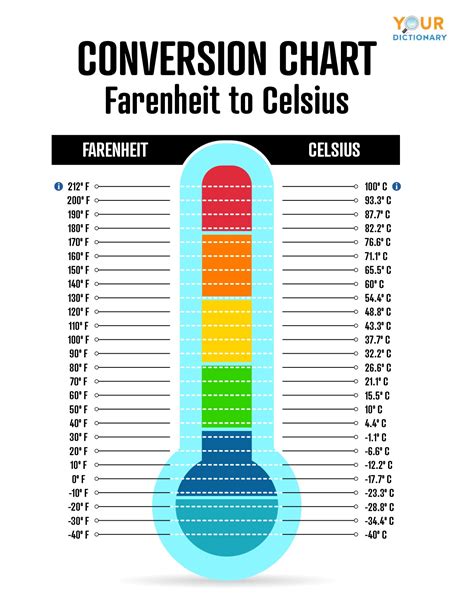Are you struggling to understand the Fahrenheit to Celsius conversion? Look no further! This comprehensive guide will provide you with all the essential information you need to confidently convert between these two temperature scales.

Understanding the Fahrenheit and Celsius Scales
The Fahrenheit and Celsius scales are two widely used temperature scales. The Fahrenheit scale is primarily used in the United States, while the Celsius scale is used in most other countries.
- Fahrenheit Scale: The Fahrenheit scale measures temperature based on a scale where water freezes at 32 degrees Fahrenheit (°F) and boils at 212 °F.
- Celsius Scale: The Celsius scale measures temperature based on a scale where water freezes at 0 degrees Celsius (°C) and boils at 100 °C.
Formula for Converting 82F to Celsius
To convert 82 °F to Celsius, simply subtract 32 and then divide the result by 1.8.
(82 °F - 32) / 1.8 = 27.8 °C
Therefore, 82 °F is equivalent to 27.8 °C.
Conversion Table
For your convenience, here is a table summarizing the conversion of temperatures from Fahrenheit to Celsius:
| Fahrenheit (°F) | Celsius (°C) |
|---|---|
| 0 | -17.8 |
| 10 | -12.2 |
| 20 | -6.7 |
| 30 | -1.1 |
| 40 | 4.4 |
| 50 | 10.0 |
| 60 | 15.6 |
| 70 | 21.1 |
| 80 | 26.7 |
| 90 | 32.2 |
| 100 | 37.8 |
Common Mistakes to Avoid
When converting from Fahrenheit to Celsius, it’s important to avoid the following common mistakes:
- Using the wrong formula: Remember to use the formula provided above: (Fahrenheit – 32) / 1.8.
- Forgetting to subtract 32: Be sure to subtract 32 from the Fahrenheit temperature before dividing by 1.8.
- Rounding too early: Convert the temperature to the nearest tenth of a degree Celsius before rounding.
Why Temperature Matters
Temperature plays a crucial role in various aspects of our daily lives and scientific research:
- Human health: Temperature influences physiological processes such as metabolism, enzyme activity, and immune function.
- Weather forecasting: Temperature data helps meteorologists predict weather patterns and extremes.
- Industrial processes: Temperature control is essential for manufacturing, food processing, and energy production.
- Scientific research: Temperature is a key parameter in experiments and calculations across all scientific disciplines.
Benefits of Converting to Celsius
There are several advantages to converting temperatures to Celsius:
- International standard: Celsius is the internationally recognized temperature scale, facilitating scientific communication and data exchange.
- Linear scale: The Celsius scale is linear, making it easier to perform calculations and compare temperatures.
- Easier to understand: The Celsius scale is more intuitive for many people as it relates temperature more directly to everyday experiences.
FAQs
1. Why is water at 32 °F instead of 0 °F?
Answer: Daniel Fahrenheit arbitrarily set the freezing point of water to 32 °F when he invented his scale.
2. What is the difference between heat and temperature?
Answer: Heat is the flow of thermal energy, while temperature measures the average kinetic energy of molecules in a system.
3. Can temperature be negative on the Celsius scale?
Answer: Yes, temperatures below 0 °C are possible and indicate the absence of heat.
4. What is the highest temperature ever recorded on Earth?
Answer: The highest temperature ever recorded on Earth was 56.7 °C (134 °F) in Death Valley, California, in 1913.
5. Why do different thermometers give different readings?
Answer: Thermometer readings can vary due to factors such as calibration, sensor type, and environmental conditions.
6. How can I quickly convert temperatures from Fahrenheit to Celsius in my head?
Answer: An easy trick is to subtract 30 from the Fahrenheit temperature, multiply the result by 5/9, and then add 32.
Conclusion
Converting temperatures from Fahrenheit to Celsius is a straightforward process using the provided formula. By understanding the differences between the two scales, avoiding common mistakes, and recognizing the significance of temperature, you can confidently navigate temperature conversions in various applications. Embrace the Celsius scale for its international standard, linear properties, and ease of interpretation.
